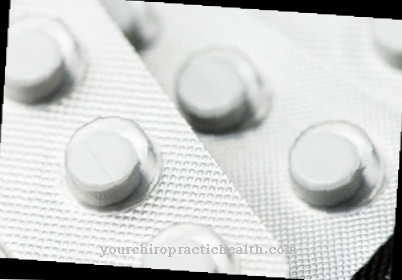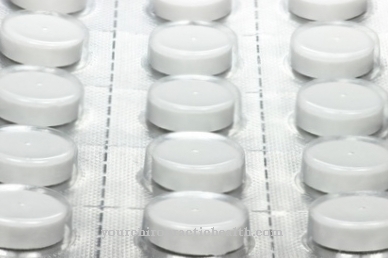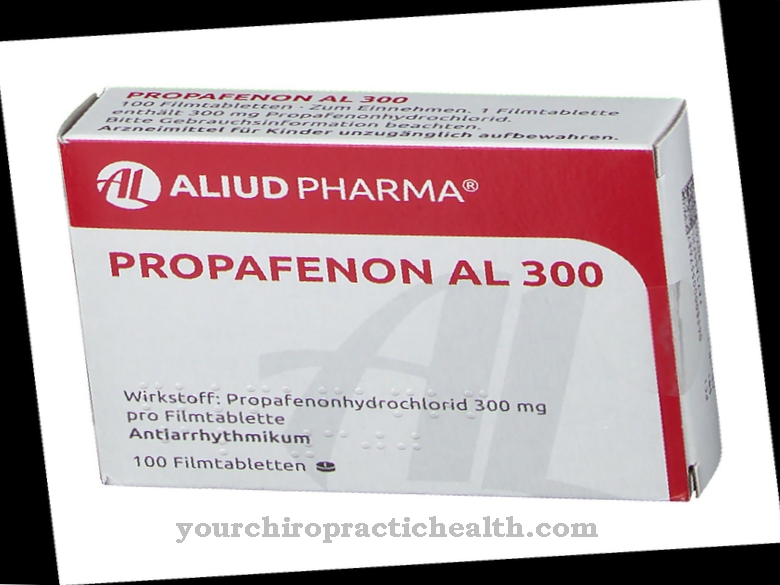Lovastatin is a drug used to treat high cholesterol, heart attacks, acute coronary syndrome and unstable angina pectoris. In the human body, it works primarily on the formation of cholesterol and the liver, which stimulates the absorption of more cholesterol from the blood.
What is lovastatin?
Lovastatin is a statin drug. As is typical for this type of drug, it is used to treat high cholesterol levels (hypercholesterolemia), but also after a heart attack, acute coronary syndrome and unstable angina pectoris.
Cholesterol is a blood fat that has a bad rap for its role in causing heart disease. However, the human organism needs it in normal quantities to produce various hormones, vitamin D, bile acid and cell membranes. Cholesterol is one of the low-density lipoproteins (LDL).
In 1987, Lovastatin came on the market as the first statin that lowers blood lipid levels. The molecular formula of the actually colorless active ingredient is C24H36O5; The industry produces the drug with the help of the fungi Aspergillus terreus and Monascus ruber, whereby the microorganisms ferment the starting materials in several process steps.
Pharmacological effect
Lovastatin's mechanism of action is by blocking the enzyme HMG-CoA reductase, which the human body needs to make cholesterol. At the same time, the drug stimulates the liver to absorb and break down more cholesterol. LDL receptors in the liver respond to blood lipids like cholesterol: the LDL receptor binds to the molecule and takes it up in a recess in the cell membrane known as a quill edge dimple. The occupied cavity then closes and in this way becomes a vesicle in the membrane. The trapped cholesterol is thus removed from the bloodstream.
Lovastatin also inhibits the formation of new cholesterol. In normal cholesterol regulation, the enzyme HMG-COA reductase uses the coenzyme nicotinamide adenine dinucleotide phosphate (NADPH), which takes up the cleaved residues of the substrate during the biochemical reaction.
In the body of a healthy person, the cholesterol level regulates itself through thyroid hormones, insulin and glucagon as well as through the available amount of HMG-CoA reductase: As long as there is sufficient cholesterol, it binds to special protein. If the cholesterol level falls, however, more and more of these binding proteins remain unoccupied and the activated proteins produce transcription factors, which in turn stimulate the synthesis of HMG-CoA reductase.
The increasing number of enzymes leads accordingly to increased cholesterol formation, while conversely an increasing cholesterol level results in the automatic inhibition of the synthesis. Lovastatin intervenes in this process by inhibiting HMG-CoA reductase and thus reducing the formation of new cholesterol.
Medical application & use
Lovastatin is used, among other things, in the treatment of high levels of cholesterol in the blood. This hypercholesterolemia is reflected in a laboratory test of the blood in increased LDL values. In a healthy person without risk factors, the value should not exceed 160 mg / dl; for patients with coronary artery disease or arteriosclerosis the reference value is below 100 mg / dl. High cholesterol levels are also a general risk factor for these two diseases.
Atherosclerosis is characterized by deposits in the blood vessels that can obstruct blood flow and consist of fat, thrombi, calcium or connective tissue. These can cause further complications and, among other things, contribute to the development of a heart attack, for the treatment of which the drug lovastatin is also indicated. In the event of a heart attack or myocardial infarction, the blood supply to the heart is interrupted.
Survivors are often given a variety of medications after a heart attack to reduce the chance of another incident. In this case, lovastatin comes into consideration alongside other statins, beta blockers, ACE inhibitors and other drugs and in this role takes on both a preventive and a preventive role.
A less specific cardiological disease is the acute coronary syndrome, in which various heart-related complaints occur. The syndrome is used by doctors as a “work diagnosis” until they can pinpoint the actual disease. One of the possible causes of acute coronary syndrome is unstable angina pectoris, which is due to a combination of arteriosclerosis and coronary heart disease. It can precede a heart attack and can also be treated with lovastatin.
Risks & side effects
Lovastatin is contraindicated in the case of myopathy, biliary obstruction (cholestasis) or an increased concentration of liver enzymes. The most common side effects of the drug include headache, elevated liver function tests, indigestion, and myopathies. In this case, the latter are among the toxic myopathies, as they are due to a drug and lead to the typical muscle weakness of the diverse clinical picture. Overall, muscle discomfort occurs in 0.025% of patients taking lovastatin.
In extreme cases, the muscle fibers can break down (rhabdomyolysis), which leads to numerous other symptoms: muscle weakness and pain, edema in the muscle tissue, fever, diarrhea and vomiting are symptoms of rhabdomyolysis.
Furthermore, the uric acid level in the blood can increase (hyperuricemia), the body may excrete larger amounts of the muscle pigment myoglobin (myoglobinuria) and electrolyte disturbances and consumption coagulopathy are possible in the context of rhabdomyolysis.
A patient's risk of developing muscle fiber breakdown as a side effect of lovastatin increases when lovastatin is combined with fibrates: for example, simultaneous use of gemfibrozil and lovastatin causes the severe side effect in 1–5% of cases. In addition, various antibiotics and antifungal drugs can promote side effects of lovastatin. Foods like grapefruit juice can also cause this effect.












.jpg)



.jpg)










.jpg)
